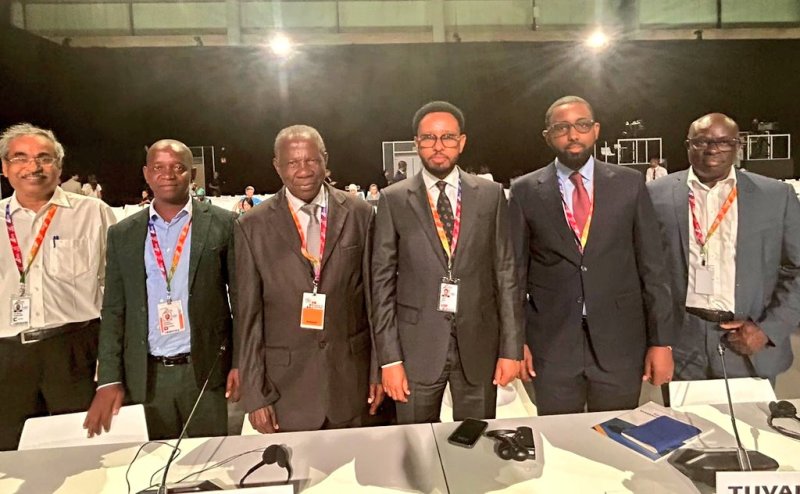Regions where you are most likely to be struck by lightning
This part of Central Africa, sitting squarely within the "Global Lightning Belt," experiences more lightning strikes than anywhere else on Earth.

On a typical afternoon in the Democratic Republic of Congo (DRC), the sky is alive with flashes of brilliant light, followed by the earth-shaking roar of thunder.
This part of Central Africa, sitting squarely within the “Global Lightning Belt,” experiences more lightning strikes than anywhere else on Earth. To the people here, lightning is more than just a natural phenomenon — it’s a way of life, influencing everything from architecture to local customs.
But what makes this region such a hotspot for lightning strikes? According to Dr. Andrew Mwesige, a climatologist and expert on tropical weather patterns, it’s all about geography and climate.
“The areas near the equator, especially those with a lot of humidity and heat, are prime conditions for thunderstorm development,” Dr. Mwesige explains. “The combination of intense solar heating and moisture from tropical rainforests creates the perfect environment for convective storms.”
The DRC, with its sprawling rainforests and proximity to the equator, experiences this phenomenon almost daily. In fact, according to the World Meteorological Organization, the town of Kifuka in eastern Congo sees more than 158 lightning flashes per square kilometer every year — the highest density of lightning strikes in the world.
He said for comparison, Florida, another lightning-prone region, only sees about 82 flashes per square kilometer annually.
This high frequency of storms affects daily life in significant ways. Homes are often designed with special lightning rods, and communities have established intricate warning systems, especially in rural areas where open fields and tall trees make people more vulnerable.
Cultural Adaptations and Superstitions
Dr. Mwesige highlighted that lightning’s omnipresence in the region has also shaped local culture and beliefs.
“In some African communities, lightning is seen as a message from the gods or a tool of punishment for wrongdoers. Elders in villages often tell stories about spirits or deities who control the skies, sending bolts of lightning as a form of divine intervention.”
“It’s not uncommon for people to interpret lightning strikes as spiritual,” says Dr. Mwesige. “Many communities in Central Africa believe lightning can be summoned by traditional healers or used in warfare. This belief has been passed down for generations.”
In some villages, it strikes on homes are seen as a curse, and elaborate rituals are performed to cleanse the area. On the flip side, some people view lightning as a symbol of power and fertility, associating it with the forces of creation and destruction that govern the natural world.
But isn’t just an ethereal force — it’s a deadly reality. In the DRC and other regions within the lightning belt, casualties from strikes are alarmingly high. Rural populations are particularly at risk due to poor infrastructure and limited access to safe shelters.
“Many people in lightning-prone areas don’t have the education or the resources to protect themselves adequately,” says Dr. Mwesige. “This can lead to tragic incidents where individuals, especially farmers working in open fields, are struck and killed.”
Statistics from the World Health Organization suggest that hundreds of people are killed annually by lightning in Central Africa, though the true numbers may be much higher due to underreporting in rural regions. Many schools and community centers are beginning to educate people on lightning safety, but progress is slow.
Technology to the Rescue?
Interestingly, modern technology is starting to play a role in mitigating light-related disasters. Scientists are working on developing early-warning systems that can predict lightning strikes hours before they occur. In places like Uganda and Rwanda, mobile apps that alert citizens of impending storms are gaining popularity.
“The goal is to combine traditional knowledge with modern technology,” Dr. Mwesige says. “By doing so, we can reduce the number of fatalities and help people adapt to living in such high-risk areas.”
Some researchers are even exploring the idea of harnessing lightning as a renewable energy source, though this concept is still in its infancy. “It’s an exciting prospect,” Dr. Mwesige notes. “The challenge is capturing and storing such a massive, unpredictable burst of energy. But given the frequency of lightning in this region, it’s certainly worth exploring.”
For now, lightning remains both a friend and foe in the Global Lightning Belt. While it shapes the rhythms of daily life and plays a vital role in the ecosystem by helping to release nitrogen into the soil, it also poses a constant threat to those living under its frequent flashes.
In the DRC, people have learned to adapt to the skies’ volatile moods. They build their homes with caution, they heed the warnings passed down from elders, and they remain ever watchful as the afternoon heat gives rise to the familiar crackle of thunder in the distance. For many, lightning is not just something to be feared; it’s something to be respected, understood, and—where possible—avoided.







